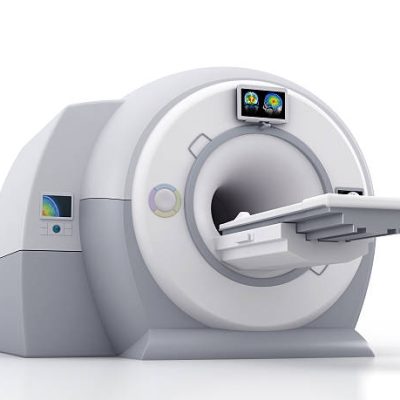Project Report For MRI Machine
Introduction
Project Report For MRI Machine is as follows.
Magnetic resonance imaging (MRI) is a form of technology that is used to create detailed images of the body. It is often used to detect irregularities in the body, diagnose disorders, and monitor patients who are having therapy on a regular basis. It is capable to producing three-dimensional images of non-bony tissues such as the brain. MRI techniques are non-invasive, involve no preparation, and pose no health hazards because they do not employ hazardous kinds of radiation like X-rays.
An MRI scanner generates a magnetic field with big, powerful magnets that can modify how these particles rotate in your body, causing them to align with the magnetic field. The patient is then pulsed with non-harmful radio waves, which change the direction of the particles so that they are no longer aligned with the magnetic field. The radio waves are then switched off, allowing the particles to realign with the magnetic field.
The patient is positioned on a table that will be moved into the tunnel-shaped chamber. The patient is normally awake and will remain in the chamber for the duration of the procedure (approximately 30-60 minutes). There are often loud mechanical sounds as the scan progresses, thus earplugs are provided for safety. Some patients may be bothered by the noises or experience claustrophobia. Getting more acquainted with the technique, as well as listening to music or closing your eyes, might assist decrease discomfort throughout the scan.

Types Of MRI Machine
- Extremity MRI :- This is a diagnostic imaging treatment that examines the tissues in the arms and legs using a closed MRI scanner. Unlike regular MRI, which use a big tube-shaped instrument, extremity MRI employs a smaller scanner intended exclusively for the body’s extremities. This reduces the risk of claustrophobia, which some patients experience when confined in a full-body MRI equipment.
- Open MRI :- Open MRI devices also depart from the usual design of the full-body MRI, which causes some patients to feel apprehensive owing to the machine’s “closed-in” nature. An open MRI has sides that are open or have broader openings, but the patient must still lie on a sliding table. Although an open MRI is more comfortable for people who suffer from anxiety or claustrophobia, it produces less detailed images than closed MRIs since the open nature of the machine does not provide as strong of a magnetic field.
- Tesla MRI :- This type of closed MRI uses magnetic fields that are twice as strong as those used in regular MRI machines, resulting in a more detailed image in less time. It is commonly used to detect stroke, tumours, or aneurysms in the brain; to examine the heart and circulatory system for damage caused by a heart attack or heart disease, or blockages in the blood vessels; to look for conditions such as arthritis, disc disease, or bone infections in the bones and joints; or to assess the condition of internal organs such as the liver, kidneys, uterus, ovaries, or prostate.
Get Completely Custom Bankable Project Report
Market Potential Of MRI Machine
The magnetic resonance imaging (MRI) market in India was estimated to be worth USD 251.59 million in 2021 and is anticipated to grow at a 6.9% CAGR from 2022 to 2027.
Due to the increasing frequency of practically all forms of severe and chronic disorders, there has been a continual high need for medical imaging in today’s modern medical environment. To effectively diagnose, treat, and manage chronic illness, an effective and technologically sophisticated imaging technology is essential. Magnetic resonance imaging technology allows medical practitioners to efficiently use it as a therapy method due to its outstanding imaging capabilities and qualities.
Imaging can be used to diagnose a variety of diseases, including brain and spinal cord malformations, several types of malignancies, accidents, certain forms of cardiological issues, cysts, and tumours. Almost all of the medical problems listed above have a high occurrence rate worldwide.
The rising technical improvements in imaging equipment are likely to contribute significantly to the growth of the global market. Some of the technological improvements include the introduction of open MRI, which aids in the effective medical imaging of claustrophobic and overweight patients. Improvements in field strength and computing capability of imaging equipment are also part of technical breakthroughs.

